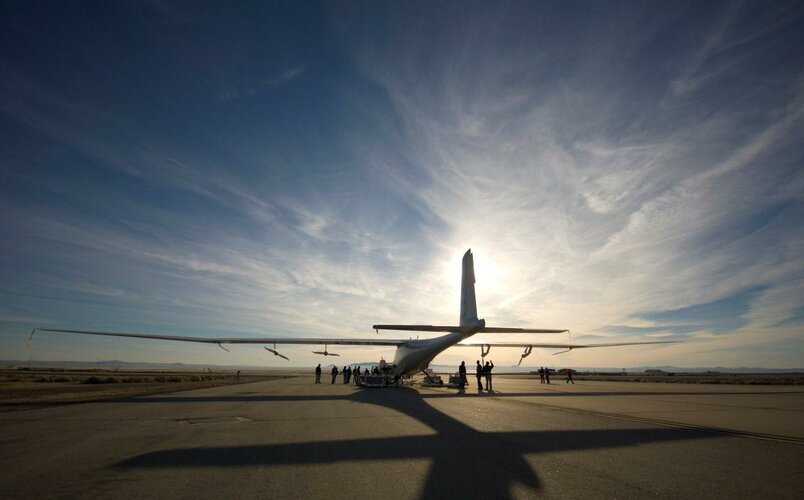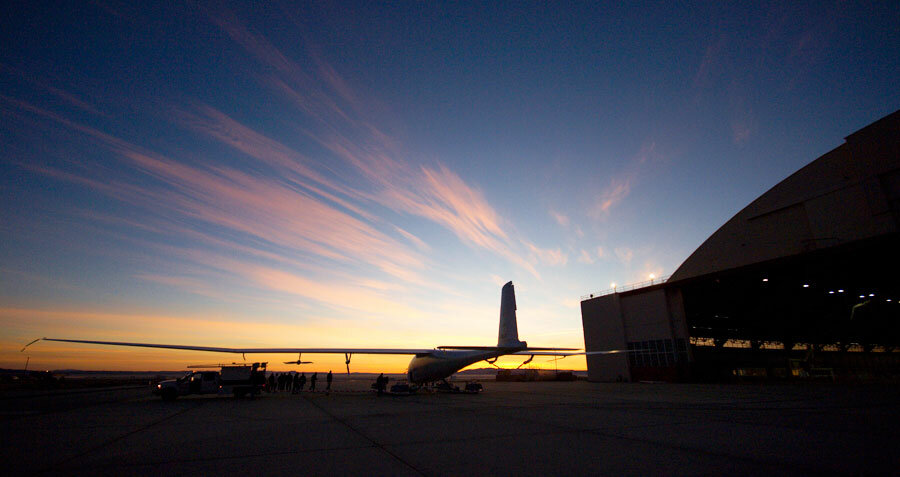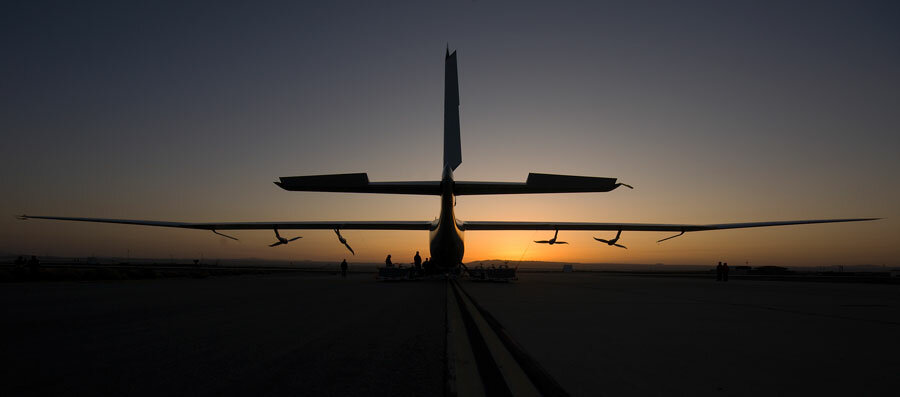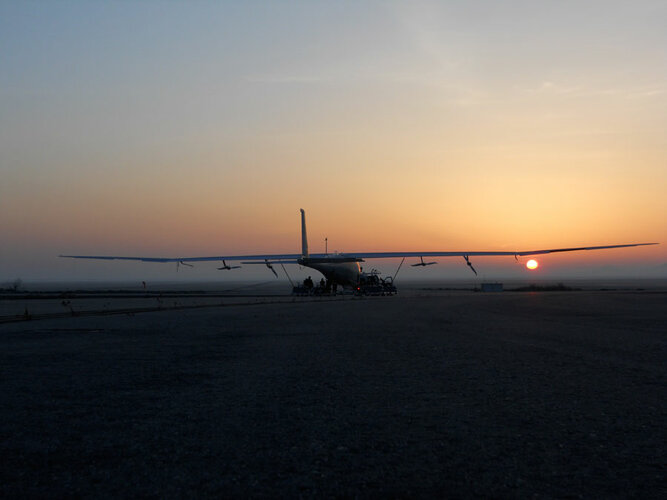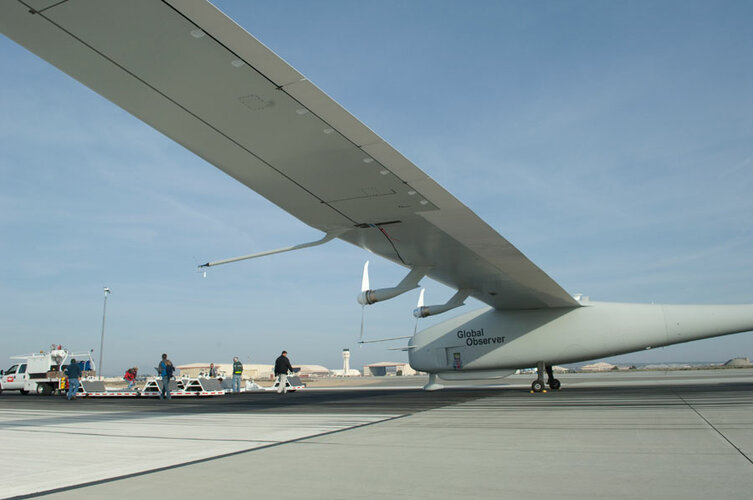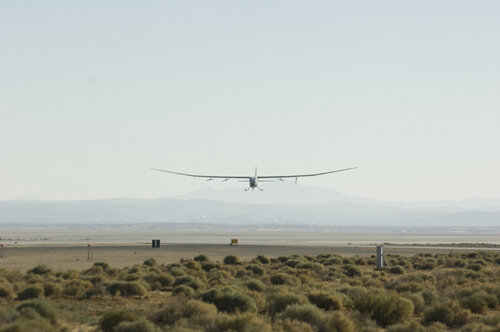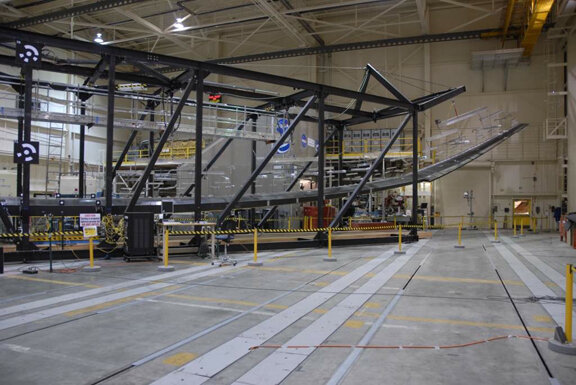seruriermarshal
ACCESS: Top Secret
- Joined
- 4 May 2008
- Messages
- 1,180
- Reaction score
- 558
New generation of unmanned spy planes is being tested
Three drones being flown in the coming weeks are speedier, stealthier and higher-flying
An experimental spy plane with a wingspan almost the size of a Boeing 747's took to the skies over the Mojave Desert last week in a secret test flight that may herald a new era in modern warfare with robotic planes flying higher, faster and with more firepower.
The massive Global Observer built by AeroVironment Inc. of Monrovia is capable of flying for days at a stratosphere-skimming 65,000 feet, out of range of most antiaircraft missiles. The plane is built to survey 280,000 square miles — an area larger than Afghanistan — at a single glance. That would give the Pentagon an "unblinking eye" over the war zone and offer a cheaper and more effective alternative to spy satellites watching from outer space.
The estimated $30-million robotic aircraft is one of three revolutionary drones being tested in coming weeks at Edwards Air Force Base.
Another is the bat-winged X-47B drone built by Northrop Grumman Corp., which could carry laser-guided bombs and be launched from an aircraft carrier. The third is Boeing Co.'s Phantom Ray drone that could slip behind enemy lines to knock out radar installations, clearing the way for fighters and bombers.
These aircraft would represent a major technological advance over the Predator and Reaper drones that the Obama administration has deployed as a central element of the U.S. military campaign in Afghanistan. Unlike most of the current fleet of more than 7,000 drones, the new remotely piloted planes will have jet engines and the ability to evade enemy radar.
"We are looking at the next generation of unmanned systems," said Phil Finnegan, an aerospace expert with Teal Group, a research firm. "As the U.S. looks at potential future conflicts, there needs to be more capable systems."
Finnegan pointed out that propeller-driven Predator and Reaper drones are not fast or stealthy enough to thread through antiaircraft missile batteries. Boeing's Phantom Ray and Northrop's X-47B, by comparison, "can enter contested air space, attack the enemy, and leave without detection on a radar screen," he said.
The Global Observer that was tested last week is designed for reconnaissance and would not carry weapons. But it would greatly extend the surveillance capabilities of drones.
Current spy planes can stay airborne for only about 30 hours. The Global Observer is designed to beat that mark several times over, flying up to a week at a time, and company officials say it may be ready to go into service by year's end.
The drone is designed to do the work that so far has been done by satellites, including relaying communications between military units and spotting missiles as they are launched.
On Thursday, the Global Observer performed its first test demonstrating its ability to use liquid hydrogen as fuel. The drone circled above Edwards at about 3,000 feet above ground level in a four-hour test, according to AeroVironment executives, who plan to announce the achievement Tuesday.
"This is a paradigm shift from capabilities that have come before," said AeroVironment Chairman and Chief Executive Timothy E. Conver. "It's so radically different that it's hard for people to wrap their minds around it."
AeroVironment was founded in 1971 and has built several lightweight aircraft over the years. It is now the largest provider to the U.S. military of small, hand-launched drones that soldiers use to see over hills or around other obstructions.
The Global Observer was built under a Pentagon demonstration program by 150 engineers and technicians at a company production facility in Simi Valley.
If AeroVironment lands a big production contract, it would be a major boost for Southern California's drone industry. That industry employs an estimated 10,000 people, fueled by at least $20 billion in Pentagon spending since 2001, with additional billions from the CIA and Congress.
The Pentagon has increasingly focused on drones because they reduce the risk of American casualties and because they can be operated for a fraction of the cost of piloted aircraft.
That has been a benefit to Southern California's aerospace industry, which has a hand in most of the drones being developed.
Century City-based Northrop is building the X-47B drone at Plant 42 in Palmdale under a $635.8-million contract awarded by the Navy in 2007.
Currently, combat drones are controlled remotely by a human pilot. With the X-47B, which resembles a miniature version of the B-2 stealth bomber, a human pilot designs a flight path and sends it on its way; a computer program would guide it from a ship to target and back.
"The X-47B represents game-changing technology that will allow American forces to project combat power from longer distances without putting humans in harm's way," said Paul Meyer, general manager of Northrop's Advanced Programs & Technology division.
Boeing's Phantom Ray is being built in St. Louis with engineering support from its Phantom Works facilities in Huntington Beach. The company does not have a contract; it is developing the drone at its own expense.
These aircraft may be several years away from service, but defense industry analysts say there is little doubt that they represent the wave of the future.
"We're entering an era that's similar to the jet age for aviation," said defense expert Peter W. Singer, author of "Wired for War," a book about robotic warfare. "These are capabilities that have never been fielded. The tests will point us in the direction of where we head next."
http://www.latimes.com/business/la-fi-drone-warfare-20110111,0,4325330.story
Three drones being flown in the coming weeks are speedier, stealthier and higher-flying
An experimental spy plane with a wingspan almost the size of a Boeing 747's took to the skies over the Mojave Desert last week in a secret test flight that may herald a new era in modern warfare with robotic planes flying higher, faster and with more firepower.
The massive Global Observer built by AeroVironment Inc. of Monrovia is capable of flying for days at a stratosphere-skimming 65,000 feet, out of range of most antiaircraft missiles. The plane is built to survey 280,000 square miles — an area larger than Afghanistan — at a single glance. That would give the Pentagon an "unblinking eye" over the war zone and offer a cheaper and more effective alternative to spy satellites watching from outer space.
The estimated $30-million robotic aircraft is one of three revolutionary drones being tested in coming weeks at Edwards Air Force Base.
Another is the bat-winged X-47B drone built by Northrop Grumman Corp., which could carry laser-guided bombs and be launched from an aircraft carrier. The third is Boeing Co.'s Phantom Ray drone that could slip behind enemy lines to knock out radar installations, clearing the way for fighters and bombers.
These aircraft would represent a major technological advance over the Predator and Reaper drones that the Obama administration has deployed as a central element of the U.S. military campaign in Afghanistan. Unlike most of the current fleet of more than 7,000 drones, the new remotely piloted planes will have jet engines and the ability to evade enemy radar.
"We are looking at the next generation of unmanned systems," said Phil Finnegan, an aerospace expert with Teal Group, a research firm. "As the U.S. looks at potential future conflicts, there needs to be more capable systems."
Finnegan pointed out that propeller-driven Predator and Reaper drones are not fast or stealthy enough to thread through antiaircraft missile batteries. Boeing's Phantom Ray and Northrop's X-47B, by comparison, "can enter contested air space, attack the enemy, and leave without detection on a radar screen," he said.
The Global Observer that was tested last week is designed for reconnaissance and would not carry weapons. But it would greatly extend the surveillance capabilities of drones.
Current spy planes can stay airborne for only about 30 hours. The Global Observer is designed to beat that mark several times over, flying up to a week at a time, and company officials say it may be ready to go into service by year's end.
The drone is designed to do the work that so far has been done by satellites, including relaying communications between military units and spotting missiles as they are launched.
On Thursday, the Global Observer performed its first test demonstrating its ability to use liquid hydrogen as fuel. The drone circled above Edwards at about 3,000 feet above ground level in a four-hour test, according to AeroVironment executives, who plan to announce the achievement Tuesday.
"This is a paradigm shift from capabilities that have come before," said AeroVironment Chairman and Chief Executive Timothy E. Conver. "It's so radically different that it's hard for people to wrap their minds around it."
AeroVironment was founded in 1971 and has built several lightweight aircraft over the years. It is now the largest provider to the U.S. military of small, hand-launched drones that soldiers use to see over hills or around other obstructions.
The Global Observer was built under a Pentagon demonstration program by 150 engineers and technicians at a company production facility in Simi Valley.
If AeroVironment lands a big production contract, it would be a major boost for Southern California's drone industry. That industry employs an estimated 10,000 people, fueled by at least $20 billion in Pentagon spending since 2001, with additional billions from the CIA and Congress.
The Pentagon has increasingly focused on drones because they reduce the risk of American casualties and because they can be operated for a fraction of the cost of piloted aircraft.
That has been a benefit to Southern California's aerospace industry, which has a hand in most of the drones being developed.
Century City-based Northrop is building the X-47B drone at Plant 42 in Palmdale under a $635.8-million contract awarded by the Navy in 2007.
Currently, combat drones are controlled remotely by a human pilot. With the X-47B, which resembles a miniature version of the B-2 stealth bomber, a human pilot designs a flight path and sends it on its way; a computer program would guide it from a ship to target and back.
"The X-47B represents game-changing technology that will allow American forces to project combat power from longer distances without putting humans in harm's way," said Paul Meyer, general manager of Northrop's Advanced Programs & Technology division.
Boeing's Phantom Ray is being built in St. Louis with engineering support from its Phantom Works facilities in Huntington Beach. The company does not have a contract; it is developing the drone at its own expense.
These aircraft may be several years away from service, but defense industry analysts say there is little doubt that they represent the wave of the future.
"We're entering an era that's similar to the jet age for aviation," said defense expert Peter W. Singer, author of "Wired for War," a book about robotic warfare. "These are capabilities that have never been fielded. The tests will point us in the direction of where we head next."
http://www.latimes.com/business/la-fi-drone-warfare-20110111,0,4325330.story




